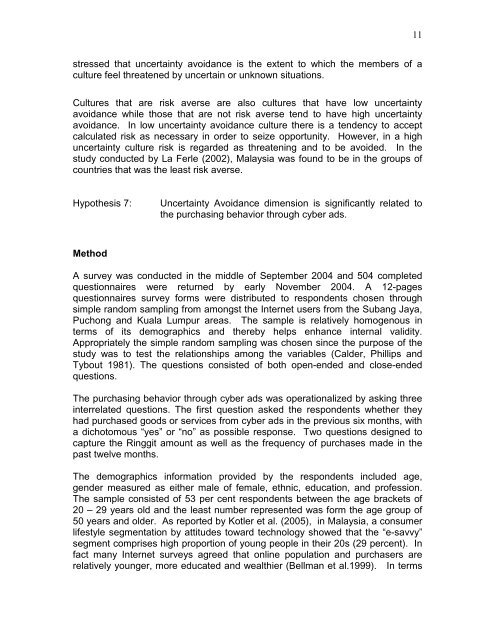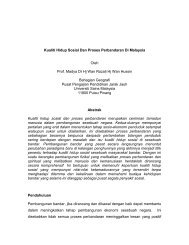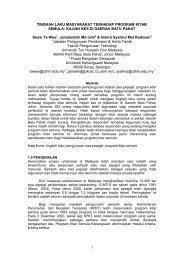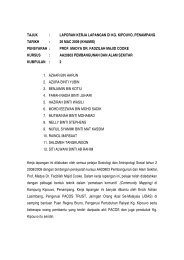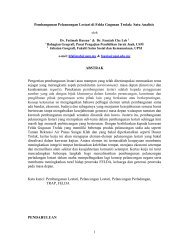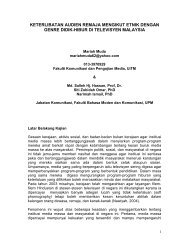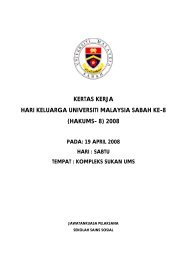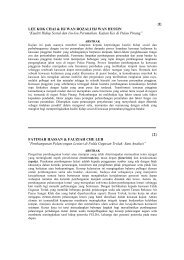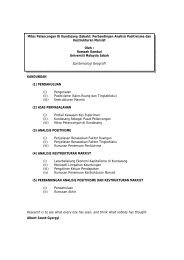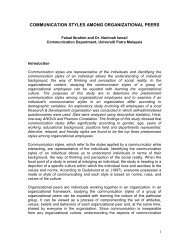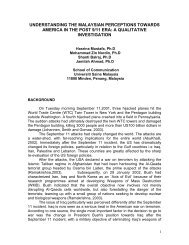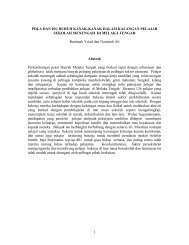FACTORS AFFECTING ONLINE PURCHASING BEHAVIOR
FACTORS AFFECTING ONLINE PURCHASING BEHAVIOR
FACTORS AFFECTING ONLINE PURCHASING BEHAVIOR
Create successful ePaper yourself
Turn your PDF publications into a flip-book with our unique Google optimized e-Paper software.
11stressed that uncertainty avoidance is the extent to which the members of aculture feel threatened by uncertain or unknown situations.Cultures that are risk averse are also cultures that have low uncertaintyavoidance while those that are not risk averse tend to have high uncertaintyavoidance. In low uncertainty avoidance culture there is a tendency to acceptcalculated risk as necessary in order to seize opportunity. However, in a highuncertainty culture risk is regarded as threatening and to be avoided. In thestudy conducted by La Ferle (2002), Malaysia was found to be in the groups ofcountries that was the least risk averse.Hypothesis 7:Uncertainty Avoidance dimension is significantly related tothe purchasing behavior through cyber ads.MethodA survey was conducted in the middle of September 2004 and 504 completedquestionnaires were returned by early November 2004. A 12-pagesquestionnaires survey forms were distributed to respondents chosen throughsimple random sampling from amongst the Internet users from the Subang Jaya,Puchong and Kuala Lumpur areas. The sample is relatively homogenous interms of its demographics and thereby helps enhance internal validity.Appropriately the simple random sampling was chosen since the purpose of thestudy was to test the relationships among the variables (Calder, Phillips andTybout 1981). The questions consisted of both open-ended and close-endedquestions.The purchasing behavior through cyber ads was operationalized by asking threeinterrelated questions. The first question asked the respondents whether theyhad purchased goods or services from cyber ads in the previous six months, witha dichotomous “yes” or “no” as possible response. Two questions designed tocapture the Ringgit amount as well as the frequency of purchases made in thepast twelve months.The demographics information provided by the respondents included age,gender measured as either male of female, ethnic, education, and profession.The sample consisted of 53 per cent respondents between the age brackets of20 – 29 years old and the least number represented was form the age group of50 years and older. As reported by Kotler et al. (2005), in Malaysia, a consumerlifestyle segmentation by attitudes toward technology showed that the “e-savvy”segment comprises high proportion of young people in their 20s (29 percent). Infact many Internet surveys agreed that online population and purchasers arerelatively younger, more educated and wealthier (Bellman et al.1999). In terms


